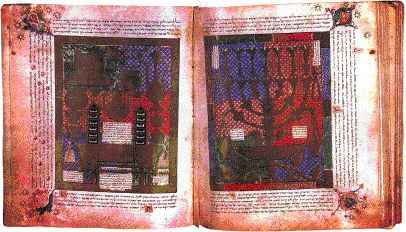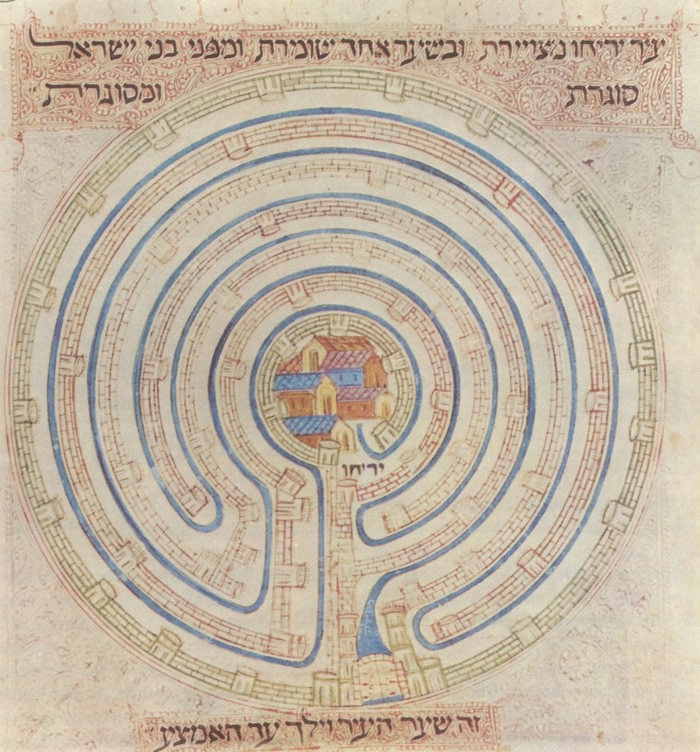A Sacred Manuscript's Journey Through Seven Centuries
Medieval Origins
The Farhi Legacy
Political Upheaval and Displacement
Legal Disputes and Restitution
The Sassoon Acquisition
Modern Preservation
Carpet page, J ericho wall, Memorah, Altar.


Two full-page miniatures from the Farhi Bible.
The page on the
right
shows the menorah, the thongs and fire pans.
The page on the
left depicts the
table of showbread, the laver,
the altar of burnt offering with its shovel and basin, flesh
hooks and fire pans.
Letchworth, Sassoon Collection, ms 368, pages 182-183
(10.25 X 8.5 in -26 by 21 cms)

This Labyrinth from the Farhi Bible (ca 1325) represents the City of Jericho its seven ring walls and a locked gate.
Dieses Labyrinth, aus der Farhi-Bibel (ca. 1325), stellt die Stadt Jerich dar. Ein Ariadnefaden schlängelt sich vom verschlossenen Tor durch sieben Mauerringe zur Stadt Jerichos.
